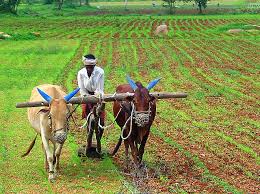- Acaparamiento de tierra
-
Politicas de tierra
- Por una nueva política de tierras agricolas en Francia
- Políticas de tierra e historia agraria en Europa
- Políticas de tierra en el medio rural en Francia durante el siglo XX
- La tenencia de la tierra en Africa occidental. Documentos pedagógicos.
- Reformas Agrarias en el Mundo
- La experiencia del Código Rural en el Níger
- Políticas de tierra y Reforma Agraria. Cuaderno de propuestas.
- Bosques
- Agua
- Gobernanza de los territorios
- FMAT - Foro Mundial sobre el Acceso a la Tierra 2016
- Otras Conferencias y Foros internacionales
- Videos de conferencias - Reuniones Temáticas de AGTER
- Entrevistas con algunos miembros de AGTER
- Capacitación - Enseñanza
- Formación - Viajes de estudio
- Enseñanza - Modulos de capacitación
- Editoriales - Boletín de información de AGTER
- Preservar el medio ambiente y los grandes equilibrios ecológicos
- Mejorar la participación de los pueblos a la toma de decisión a nivel nacional y a nivel local
- Respetar los derechos humanos fundamentales. Disminuir las desigualdades
- Construir una gobernanza mundial eficaz. Construir la paz
- Hacer que la producción agrícola cumpla eficientemente con sus roles. Eliminar el hambre
- Valorar y proteger la diversidad cultural
- Tomar en cuenta las necesidades de las futuras generaciones. Administrar los «comunes»
Título, subtítulo, autores. Búsqueda en www.agter.org y en www.agter.asso.fr
Búsqueda en texto completo con Google
Caste, class and gender disparities in Rural INDIA. Conference by Vikas Rawal
AGTER Thematic Meeting # 37. 2 June 2014
Escrito por: Vikas Rawal
Fecha de redaccion:
Organizaciones: Association pour contribuer à l’Amélioration de la Gouvernance de la Terre, de l’Eau et des Ressources naturelles (AGTER)
Tipo de documento: Vídeo
Vikas Rawal is Associated Professor at Centre for Economic Studies and Planning of Jawaharlal Nehru University, New Delhi. We thank him for having accepted Frédéric Dévé (AGTER)‘s invitation. Vikas Rawal has depicted the agrarian structures evolution in India based on the research work he has carried out for decades in the countryside of various states (see Vikas Rawal’s full article)

Inequalities existing in Indian rural regions are still persistent and multiform: they respond to caste, social classes, income, land access and gender.
Far from the idea conveyed by statistics and official documents, land access in the Indian countryside remain strongly unequal while power relations are very polarized. India is the country where more land reforms have been registered worldwide. However farming land is still concentrated in a few hands. Most of the landless peasants have no option but to accept very precarious tenancy agreements (principally share-cropping arrangements) or to sell their own labor force.
Such a situation has led to a social breakdown of peasantries in India’s rural areas. Land, mostly controlled, owned and inherited by men, still remain the principal source of economical and political power in rural India. Together with economic inequalities directly related with access to land, caste-based exclusion also exists. Thus, according to customary laws, Dalit are excluded from land access.
Liberalization policies implemented in India since 1991 have sharpened these structural inequalities. Liberalization of the market of agricultural products together with the gradual reduction of public support have seriously affected poor rural population and have increased their distance with respect to the rural ruling classes. These ones, keeping control over land and natural resources (irrigation water for instance) and still highly supported by the State, are able to obtain substantial income from agriculture.
See some excerpts of this conference below.
Carpeta
Recurso
Desafiós
- Derechos de las personas (mujeres, hombres, niños)
- Optimizar el acceso a la tierra y a los recursos naturales
Zona geográfica
Ver también
Organizaciones

 Agter participa en la Coredem
Agter participa en la Coredem